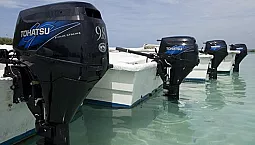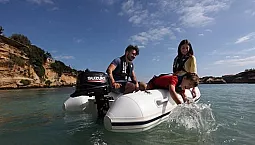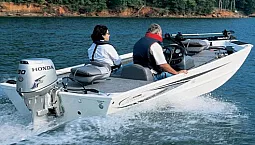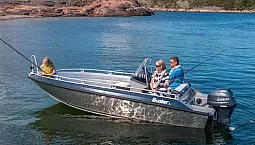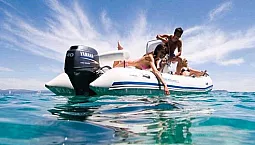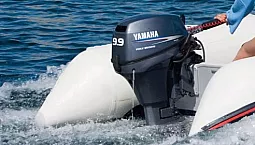1. Engine volume
What is the cubic capacity of the motor?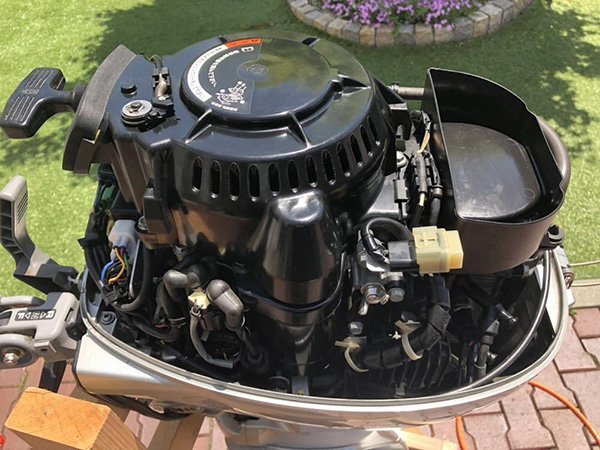
There is a misconception that the volume of the motor directly affects its power. This is only partly true, and for example, you can compare the Volga GAZ 24 and the Formula 1 car. Both there and there are almost identical motors in terms of cubic capacity, but in the first case, the power is less than 100 forces, and the second - more than 700. With outboard motors, the situation is the same same. With a power of 9.9 forces, the unit can have a completely different crankcase volume. But this option cannot be discounted. In fact, it shows how long the engine will be able to work at full load. The higher the volume, the easier it is for the motor to cope with overloads.
If you are buying an engine to put it on a PVC fishing boat, there is no point in chasing cubic capacity, but for water skiing it is very important. In principle, it makes sense to take the most voluminous motor so as not to experience any inconvenience during acceleration and loads, but in this case you will have to sacrifice weight, size and economy. The larger the volume, the higher all these indicators. But be that as it may, the winner in the nomination is Tohatsu: its volume is 333 cubic centimeters. Slightly smaller for Suzuki - 327 cm3. And Mercury and Yamaha are the weakest in this regard, only 262 and 212 cubes, respectively.
2. Max RPM
How many revolutions per minute does the engine produce?Engine speed affects the maximum speed of the boat. The faster the engine, the faster you will move. But also the engine size and propeller configuration also affect the speed. Simply put, a larger, higher RPM unit will move the boat slower due to its weight, but will be able to lift more mass. As for our nominees, it would be more correct to compare this indicator in conjunction with the volume of the crankcase:
Model | Volume (cc) | Max RPM |
Mercury 9.9M | 262 | 6000 |
Suzuki DF 9.9 BS | 327 | 6000 |
Yamaha F9.9 JMHS | 212 | 6000 |
Tohatsu MFS 9.9 E S | 333 | 6100 |
You can see that manufacturers are striving for an average standard, that is, the larger the crankcase, the higher the engine speed will be. But it should also be borne in mind that these are precisely the maximum speeds and, if you drive the engine on them, the resource will greatly decrease. In addition, even at high speeds, fuel consumption increases. Therefore, manufacturers do not indicate the maximum speed, but the operating range, that is, the interval in which the engine will feel fine. Exceeding the maximum threshold, you are already overloading the motor, and therefore ruining it. It turns out that Tohatsu becomes the winner in the nomination. With the largest crankcase, it has the highest speed. A PVC boat with such a unit will become not only fast, but also more load-bearing.
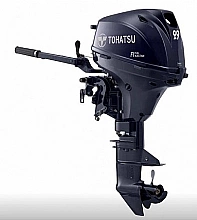
Tohatsu MFS 9.9 E S
The best equipment
3. Bore and stroke
What piston size?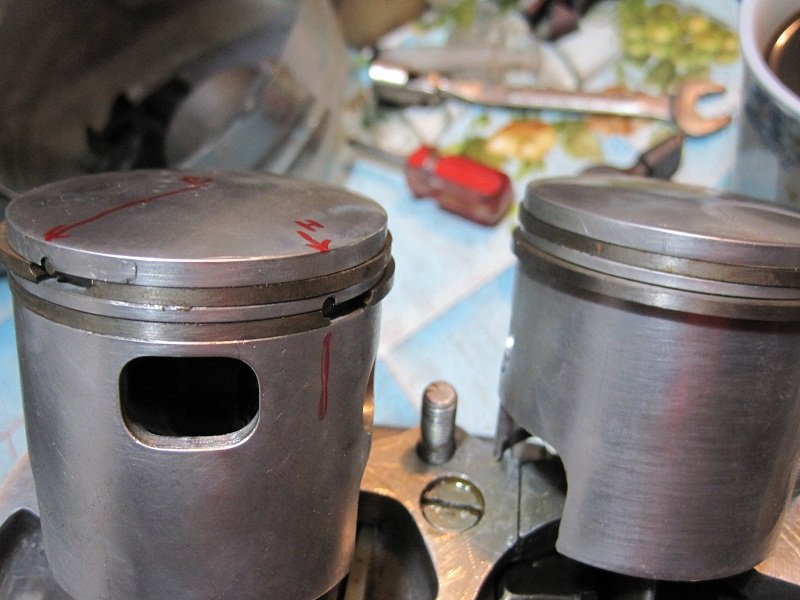
The piston stroke is the distance between two dead points: top and bottom. The ratio of this parameter to the diameter affects the torque of the motor, as well as the amount of exhaust gases. There are three types of ratios:
- super-square (short stroke), when the cylinder diameter is larger than the piston stroke;
- square (equal move) when both parameters are the same;
- under-square (long stroke) when the diameter is smaller than the stroke.
The third option looks the most attractive for 4-stroke piston engines. Such an engine will have more thrust, produce less exhaust gases and generally be more economical. But all of our nominees are super-square, meaning they have a bore diameter larger than the stroke length. Accordingly, in order to determine the winner in the nomination, it is necessary to find a motor with the smallest difference between these indicators:
Model | Piston diameter (mm) | Stroke (mm) | Difference (mm) |
Mercury 9.9M | 60 | 46 | 14 |
Suzuki DF 9.9 BS | 60,4 | 57 | 3,4 |
Yamaha F9.9 JMHS | 56 | 50 | 6 |
Tohatsu MFS 9.9 E S | 61 | 57 | 4 |
It turns out that the best result was shown by a 4-stroke outboard motor from Suzuki. It has a difference between diameter and stroke of only 3.4 millimeters. The Tohatsu unit with 4 millimeters is slightly inferior, and Mercury completely loses to them with the largest gap between these parameters. 14 millimeters is a lot and tells us that the motor will produce more exhaust gases and also lose some torque.
4. Gear ratio
How many revolutions does the screw make in one rotation of the shaft?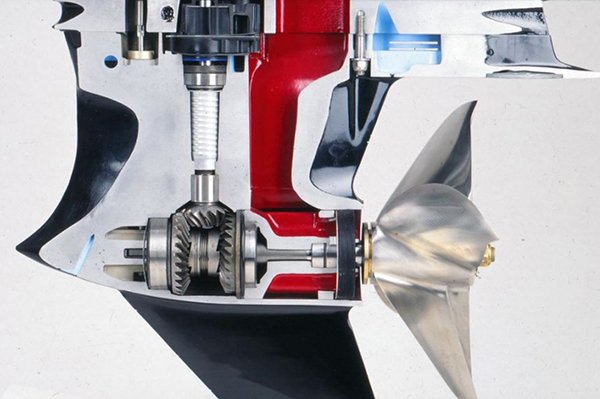
The gear ratio is the ratio of the number of teeth on the driving and driven gears. For example, on the shaft there is a gear with 10 teeth, and on the driven one there are 20. It turns out that our gear ratio will be 2 to 1.In practice, this parameter shows how quickly the boat will be able to gain maximum speed or get on the glider. It turns out that the larger this value, the better. This is only partly true. A boat motor, unlike a car motor, does not have a full-fledged gearbox.
The gearbox of the outboard motor only works in reverse. That is, there can be a maximum of three speeds: forward, reverse and neutral. In addition, some engines that did not fall into our comparison do not have reverse gear and neutral at all.
If you increase the gear ratio as much as possible, then the maximum speed will decrease, as if you were driving a car always in first gear. Balance is more important here. In addition to the gear ratio, the speed set is also affected by the design of the propeller and the engine speed. For clarity, let's take two of our nominees: Yamaha F9.9 JMHS and Suzuki DF 9.9 BS. Both have a gear ratio of 2.08 to one. The turnover is also the same. But if we put a propeller with a pitch of 13 inches on the first unit, and 11 inches on the second, then Yamaha will go to the glider much faster, and its maximum speed will be higher. In any case, the higher the gear ratio, the better, since the motor manufacturer takes into account the balancing parameters. And the winner again becomes Tohatsu with its 2.15 revolutions to one. In contrast, Mercury with a ratio of 2 to 1.
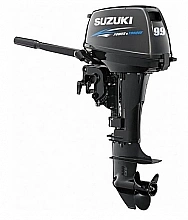
Suzuki DF 9.9BS
The most reliable model
5. Injection
How is fuel injected?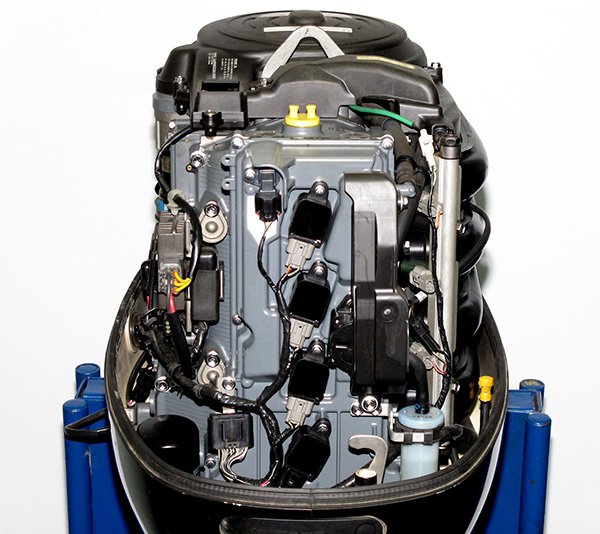
An outboard motor, whether two or four stroke, can have two injection systems: a carburetor or an injector. Each has its own advantages and disadvantages:
Injection type | Advantages | Flaws |
Carburetor | High maintainability; Ease of adjustment; Cheap to repair and replace. | Higher fuel consumption; Turnovers are more difficult to control; The need for frequent adjustments. |
Injector | Economical fuel consumption; Fully electronic control; Increases motor power. | Low maintainability; The high cost of the module; The complexity of the design. |
The injector is a more modern injection system. It is electronic, saves fuel and better controls engine power. But at the same time, it is expensive, and in case of failure, you will not be able to fix it yourself. Yes, and repairing such a module is an expensive pleasure. True, the injector breaks less often than the carburetor. But you can easily repair or adjust the carburetor right in the boat. It is enough to have a screwdriver or wrench of the appropriate size. Be that as it may, in modern systems, the best choice is precisely the injector. Among our nominees, Tohatsu and Suzuki engines use it, and Yamaha and Mercury use carbureted ones.
6. The weight
How much does the motor weigh?The PVC boat, which is most often equipped with a 9.9 hp motor, is often used for solo trips. In addition, they rarely buy a special trailer for it, but transport it on the lid of a car. That is, the motor must be constantly removed and hung up, and this has to be done alone. Of course, it is very important that the engine is lightweight. It will be very problematic to put on a weight of more than 50 kilograms on a transom.
The best option in this category is Mercury.It weighs only 35 kilograms. This is due to the small volume of the crankcase and, as a result, slower acceleration. Slightly heavier than Yamaha - 40 kilograms. It's also perfectly acceptable. But Tohatsu and Suzuki are the heaviest. The first weighs 43 kilograms, and the second - 44 kg. That is, the difference between Mercury and Suzuki is almost 10 kilograms. A significant advantage of the American manufacturer.
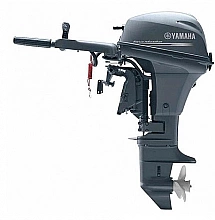
Yamaha FT 9.9 JMHS
High performance
7. Propeller screw
What propeller pitch is used?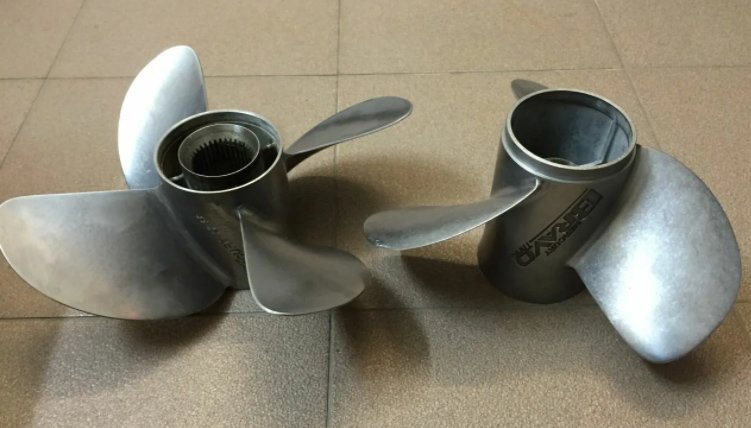
The propeller pitch directly affects the maximum speed and its set time. In this matter, it is very difficult to resist the temptation and not put the screw with the highest indicator. But in no case should this be done, since the balance is lost and the engine will work for wear, and, consequently, its working life will be reduced.
To check the balance yourself, you need to take an external tachometer, load the boat as much as possible and bring it to the maximum speed. If the tachometer shows more revolutions than indicated in the specifications, then the screw pitch is too large. Reducing the propeller pitch by one inch removes about 200 rpm.
Since manufacturers always strive for better balancing of their engines, their propeller pitch is already calculated and indicated in the manual. And the higher the recommended value, the faster your boat will go on the glider and the higher its maximum speed will be.The winner in this category is the Suzuki engine. It is recommended to put a screw with a pitch of 12 inches. In honorable second place is the Japanese Tohatsu with 10 inches. And the third place is shared by Mercury and Yamaha - they have 9-inch propellers.
8. Volume of the tank
How much fuel does the tank hold?At first glance, it may seem that the volume of the fuel tank is not the most important parameter, because you can always take additional canisters of gasoline with you. But if you have a small PVC boat and space is limited, then the best option is to choose an engine with the largest possible tank. There is only one winner here - the Mercury outboard motor. It has a 25-liter fuel tank, which allows you to make long trips without fear that gasoline will run out at the most inopportune moment. The rest of the nominees share second place. They all have tanks of 12 liters.
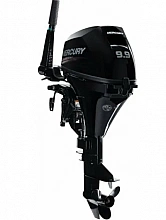
Mercury ME 9.9 MLH
Best price
9. Price
How much do motors cost?Our comparison affects only top brands, and they never differ in democratic price tags. True, their cost is offset by high quality and reliability, but you always want to save money. The best option in this category is the engine from Mercury. It costs only 122 thousand rubles. It is “only”, since its closest competitors, who shared the second place, Yamaha and Suzuki, already cost 190 thousand rubles. And the most expensive is Tohatsu. Its price tag exceeds 200 thousand rubles.
10. Comparison results
The best outboard motor in all comparison criteriaModel | Evaluation (sum of scores by criteria) | Number of wins by criteria | Category winner |
Tohatsu MFS 9.9 E S | 4.89 | 4/9 | Engine volume; Maximum revolutions; Gear ratio; Injection. |
Suzuki DF 9.9 BS | 4.22 | 3/9 | Piston diameter and stroke; Injection; Propeller screw. |
Yamaha F9.9 JMHS | 3.78 | 1/9 | The weight. |
Mercury 9.9M | 3.77 | 3/9 | The weight; Volume of the tank; Price. |
So, let's sum up. Tohatsu won by a wide margin, but lost in such important categories as weight and price. That is, it is the most powerful, but at the same time heavy and expensive outboard motor. It is injector with a lot of electronics. This explains its price tag, but it’s better to forget about self-repair right away.
Suzuki looks attractive in terms of technical characteristics. It has the best ratio of cylinder diameter in the piston stroke, and all other parameters are average. Like a Yamaha motor. In almost all nominations, although he was a little, he did not reach the first place.
And the Mercury engine is suitable for those who want to save money and are used to fixing all the breakdowns on their own. There is no huge amount of electronics, complex injectors and other bells and whistles. But the price is much lower than that of competitors. In addition, by sacrificing some aspects, the manufacturer managed to reduce the weight and size of the unit as much as possible. Putting it on the boat alone will not be difficult. Unlike Tohatsu, where help may already be needed.

